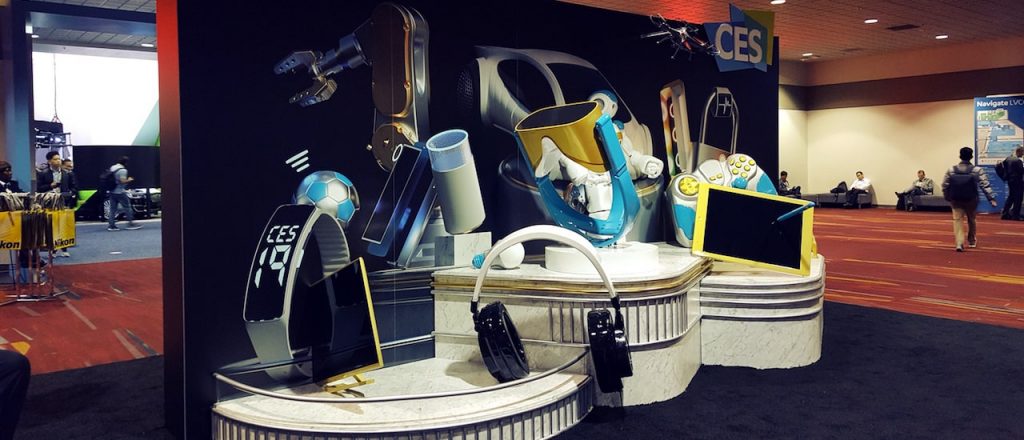Weekend Reads 011819
Your job search can feel like a movie you’ve seen over and over. The same thing seems to happen every time. You get motivated to finally start looking for a new job. You hunt around the internet and make a list of intriguing jobs. You start imagining yourself getting out of your current job. You start applying, there’s progress, you get some call backs, maybe you even go on-site to interview a few times. There’s a Continue reading
T-Mobile Lures Former Ericsson CTO to Head Its 5G Strategy
 Former Ericsson executive Ulf Ewaldsson is joining T-Mobile US’ network operations where he will serve under current T-Mobile CTO Neville Ray. A former colleague at Ericsson is also on the move.
Former Ericsson executive Ulf Ewaldsson is joining T-Mobile US’ network operations where he will serve under current T-Mobile CTO Neville Ray. A former colleague at Ericsson is also on the move.
Microsoft Adds AzureDevOps Bug Bounty, Offers $20K Rewards
 This isn’t Microsoft’s first bounty program. Its largest reward offers up to $250,000 for finding critical flaws in its Hyper-V hypervisor.
This isn’t Microsoft’s first bounty program. Its largest reward offers up to $250,000 for finding critical flaws in its Hyper-V hypervisor.
SDxCentral’s Weekly Roundup — January 18, 2019
 ZTE releases a cybersecurity statement; Microsoft wins $1.76M contract with the DoD; CenturyLink opens security center in Singapore.
ZTE releases a cybersecurity statement; Microsoft wins $1.76M contract with the DoD; CenturyLink opens security center in Singapore.
Understanding the JunOS routing table
I was just about to finish another blog post on MPLS when I got a question from a colleague about Junos routing tables. He was confused as to how to interpret the output of a basic Juniper routing table. I spent some time trying to find some resource to point him at – and was amazed at how hard it was to find anything that answered his questions specifically. Sure, there are lots of blogs and articles that explain RIB/FIB separation, but I couldn’t find any that backed it up with examples and the level of detail he was looking for. So while this is not meant to be exhaustive – I hope it might provide you some details about how to interpret the output of some of the more popular show commands. This might be especially relevant for those of you who might be coming from more of a Cisco background (like myself a number of years ago) as there are significant differences between the two vendors in this area.
Let’s start with a basic lab that looks a lot like the one I’ve been using in the previous MPLS posts…

For the sake of focusing on the real Continue reading
The SamKnows Cloudflare Platform

This is a guest post by Jamie Mason, who is the Head of Test Servers at SamKnows. This post originally appears on the SamKnows Megablog.

We leveraged Cloudflare Workers to expand the SamKnows measurement infrastructure.
At SamKnows, we run lots of tests to measure internet performance. Actually, that’s an understatement. Our software is embedded on tens of millions of devices, and that number grows daily.

We measure performance between the user’s home and the internet, across dozens of metrics. Some of these metrics measure the performance of major video-streaming services, popular games, or large websites. Others focus on the more traditional ‘quality of service’ metrics: speed, latency, and packet loss.
In order to measure speed, latency, and packet loss, SamKnows needs test servers to carry out the measurements against. These servers should be relatively near to the user’s home - this ensures that we’re measuring solely the user’s internet connection (i.e. what their Internet Service Provider sells them) and not some external factor.
As a result, we manage high-capacity test servers all over the world. Some are donated by research groups, some we host ourselves in major data centers, and still others are run inside ISPs’ own networks.
Customers Continue reading
Consumer Electronics Show: Everything’s Connected, But What About Security and Privacy?

We spent last week at the Consumer Electronics Show (aka CES) in Las Vegas, with over 180,000 of our closest friends. And with 4,500 exhibitors present, you’d have less than 30 seconds at each booth if you wanted to talk to all of them. Many articles have covered the cool new things, so in this blogpost we are going to discuss our overall impressions as they relate to our work on consumer IoT security and privacy.
Not surprisingly, there were many interesting conference sessions and a wide variety of innovative products on display, including some that seemed to push the bounds of credibility in their claims. Integration of devices with voice-driven and other platforms was everywhere – Amazon Alexa, Google Assistant, Apple HomeKit, and Samsung SmartThings being the most widely adopted to date. 5G was a hot topic, especially for its improved speeds and flexibility, though specifics about its availability are still hard to pin down.
Everything these days is getting connected to the Internet – from cat toys to sports simulators to home automation. One area that seems to be gaining more traction because it has gone beyond the “gadget” stage and is solving real problems is health and Continue reading
Heavy Networking 424: Broadcast Media Using IP Networks Part 2
Today's Heavy Networking continues a conversation about the broadcast industry's transition to IP. We consider the challenges IP networks face when implemented in a broadcasting environment, and why IP is moving ahead anyway. Our guests are Ricki Cook and Cyrus Hira.
The post Heavy Networking 424: Broadcast Media Using IP Networks Part 2 appeared first on Packet Pushers.
Huawei Takes 5G Supremacy Shot at ZTE
 Huawei and ZTE are vying for supremacy in China’s 5G R&D trials against the backdrop of an increasingly hostile international environment.
Huawei and ZTE are vying for supremacy in China’s 5G R&D trials against the backdrop of an increasingly hostile international environment.
Short Take – HTTPS Interception
HTTPS was created to ensure end to end encryption of web traffic but both good guys and attackers circumvent this with man-in-the-middle interception. In this Short Take, Russ talks about some of the mechanics of HTTPS interception as well as some implications of doing it intentionally.
The post Short Take – HTTPS Interception appeared first on Network Collective.
A Pragmatic Approach to Automation
It’s all about the journey. The path to automation is all about becoming more efficient in all the right areas to make your data center an asset and not an anchor.
Books I Read
Books I have read and when I read them.Books I Read
Was Ist Das? Just a list of books I have read and/or listened to.Books I Read
Was Ist Das? Just a list of books I have read and/or listened to. continue reading
Books I Read
Was Ist Das? Just a list of books I have read and/or listened to. continue reading



